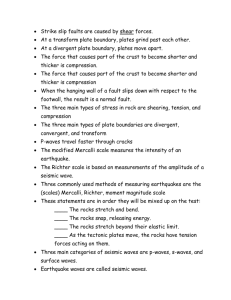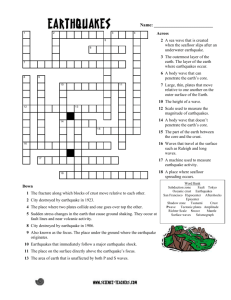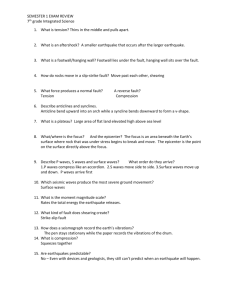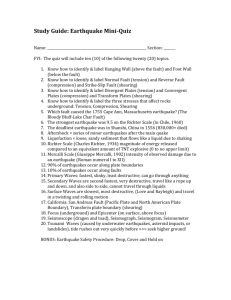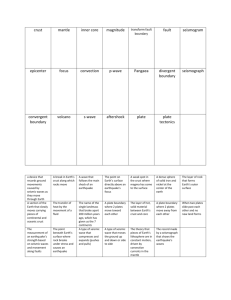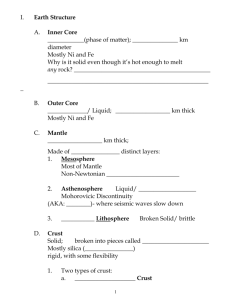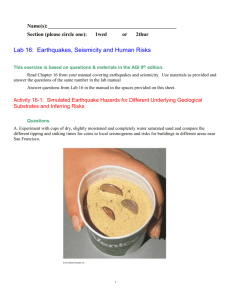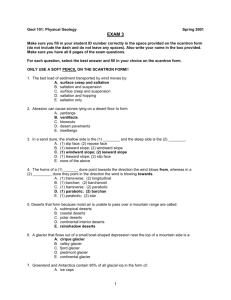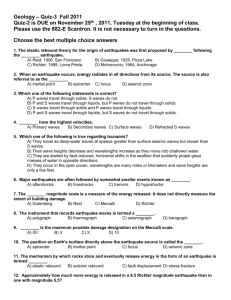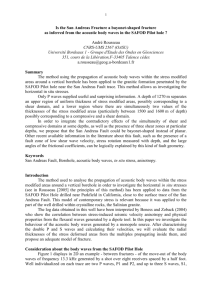Plate Tectonics
advertisement
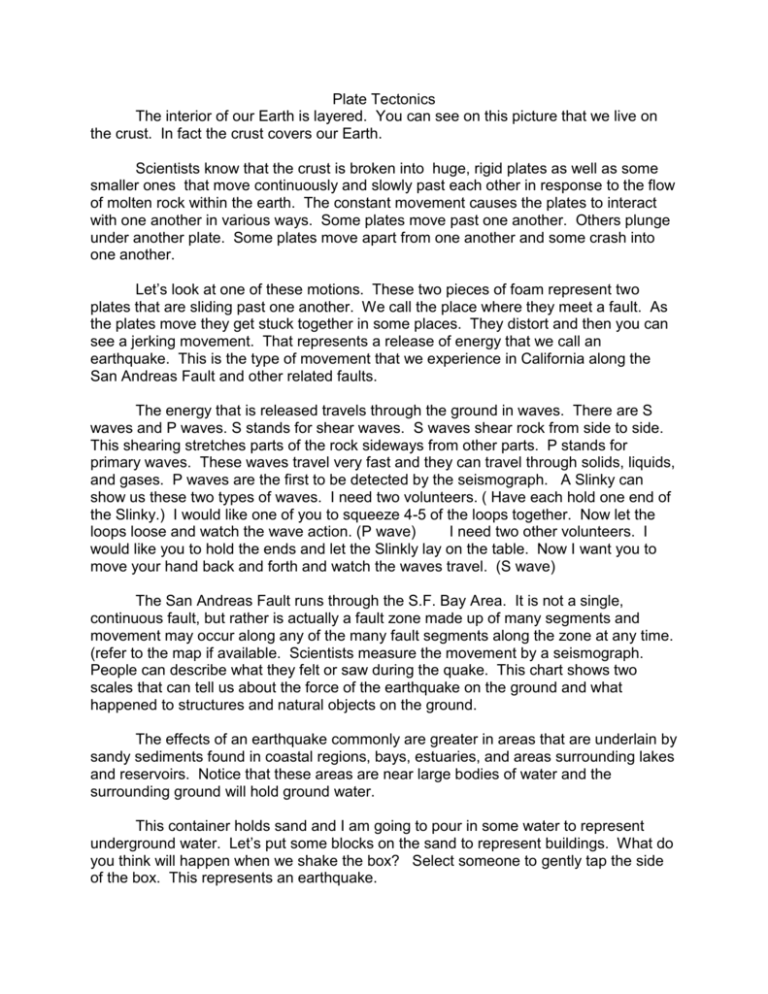
Plate Tectonics The interior of our Earth is layered. You can see on this picture that we live on the crust. In fact the crust covers our Earth. Scientists know that the crust is broken into huge, rigid plates as well as some smaller ones that move continuously and slowly past each other in response to the flow of molten rock within the earth. The constant movement causes the plates to interact with one another in various ways. Some plates move past one another. Others plunge under another plate. Some plates move apart from one another and some crash into one another. Let’s look at one of these motions. These two pieces of foam represent two plates that are sliding past one another. We call the place where they meet a fault. As the plates move they get stuck together in some places. They distort and then you can see a jerking movement. That represents a release of energy that we call an earthquake. This is the type of movement that we experience in California along the San Andreas Fault and other related faults. The energy that is released travels through the ground in waves. There are S waves and P waves. S stands for shear waves. S waves shear rock from side to side. This shearing stretches parts of the rock sideways from other parts. P stands for primary waves. These waves travel very fast and they can travel through solids, liquids, and gases. P waves are the first to be detected by the seismograph. A Slinky can show us these two types of waves. I need two volunteers. ( Have each hold one end of the Slinky.) I would like one of you to squeeze 4-5 of the loops together. Now let the loops loose and watch the wave action. (P wave) I need two other volunteers. I would like you to hold the ends and let the Slinkly lay on the table. Now I want you to move your hand back and forth and watch the waves travel. (S wave) The San Andreas Fault runs through the S.F. Bay Area. It is not a single, continuous fault, but rather is actually a fault zone made up of many segments and movement may occur along any of the many fault segments along the zone at any time. (refer to the map if available. Scientists measure the movement by a seismograph. People can describe what they felt or saw during the quake. This chart shows two scales that can tell us about the force of the earthquake on the ground and what happened to structures and natural objects on the ground. The effects of an earthquake commonly are greater in areas that are underlain by sandy sediments found in coastal regions, bays, estuaries, and areas surrounding lakes and reservoirs. Notice that these areas are near large bodies of water and the surrounding ground will hold ground water. This container holds sand and I am going to pour in some water to represent underground water. Let’s put some blocks on the sand to represent buildings. What do you think will happen when we shake the box? Select someone to gently tap the side of the box. This represents an earthquake. Let’s think about this a minute. In the box, the individual sand grains would have air or water in the spaces between them. When you shake the container, the grains settle against each other, and water and air are forced to the surface. This weakens the ability of the soil to support buildings on the surface. So it is very important to know about the geology of the region before building there. There are many agencies that can help you obtain this information. There are steps you can take before, during and after earthquakes that will help make you and your family safer. If you live in an earthquake prone area you should get information and act on it. There are easy things you can do like securing hanging objects. Make sure that your TV and other heavy objects are strapped to a wall. Have an emergency plan. Locate a safe place for meeting your family after the quake. It is important to create a disaster kit that will be helpful in all types of disasters. All of this information is readily available. Finally you should know how to protect yourself during an earthquake. DROP, COVER AND HOLD ON. Do not go outside until well after the shaking has stopped. If you are driving, pull over and stay inside your car until the shaking is over. Thanks for listening. Here is a booklet that can help you prepare for the next quake, whenever or wherever it occurs. Too long. Too many terms, definitions,...... should be cut into two demos or ???? Sand? beach sand? How do we store it? dry it? Is that necessary? Scismograph ? Where does it fit in this script?
